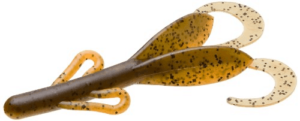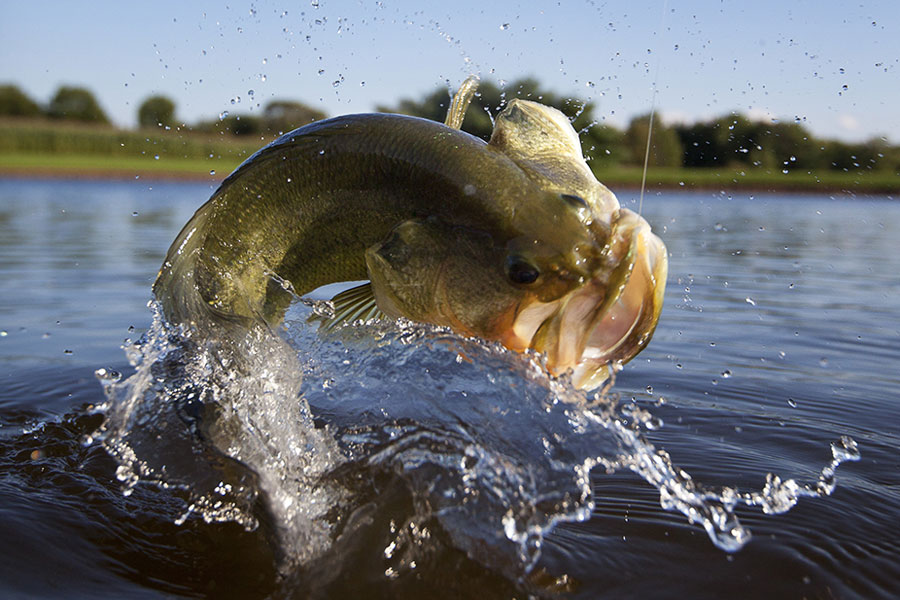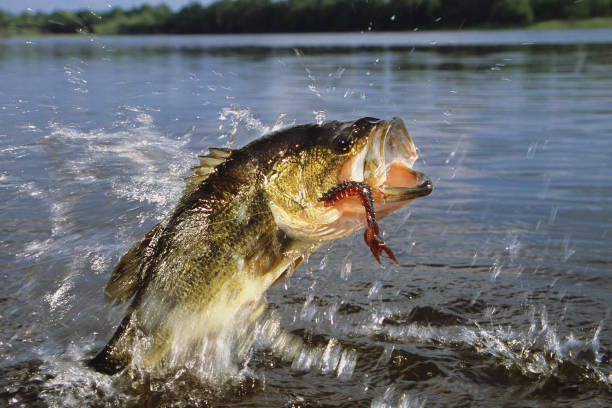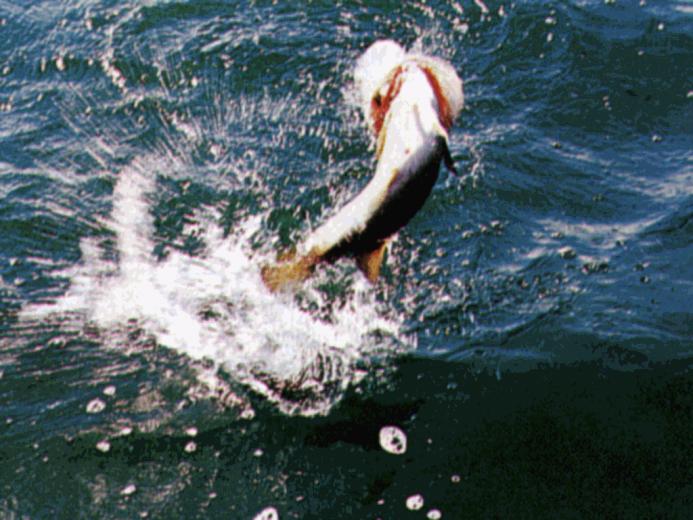Keeping with our focus on Bass Fishing this is part three of a three part feature sent to us by the US Angler for us to enjoy in the great outdoors.
Enjoy the read:
Making the Spawn Pay Off
When bass spawn in the spring, food isn’t on their minds. Instead, they’re single-minded about reproduction.
But that doesn’t mean you can’t get them to bite–you just need to follow a few tips to make this season work for you.
Remember that as the water warms to a consistent 60 degrees, males will be the first to arrive on the spawning beds. Females will hold nearby, usually at a drop off into deeper water. If you fish the shallows, you’ll be hitting small fish; if you go too deep, you won’t lure the really big females into bites–they’re not in feeding mode.
Instead, guides like Clark Reehm in Texas recommend throwing a Carolina rig into 8 to 12 feet of water, working the edges of the spawning beds before that big drop-off.
He likes to run a Zoom Brush Hog in watermelon. This crawfish imitator is murder all summer, too.
Zoom Brush Hog
You’ll need to practice patience, and the slower you work your rig, the better. As Reehm explains, “… these fish aren’t there to feed.” You’re playing on their instincts and trying to entice a bite even when they’re not particularly hungry.
Not sure how to rig your soft bait Carolina style? Check out this video:
Slow Your Fall
The timing of the fall of your soft bait is critical. Whether you’re throwing worms, Brush Hogs, lizards, or anything else, you need to keep this in mind.
When a hungry bass is looking for a meal, it’ll watch, smell, and feel with its lateral line.
As your rig falls past it, if it’s too slow for the conditions, the bass won’t check it out. Larger, older, craftier bass will notice something’s not right and pass.
By contrast, if it’s too fast for the conditions, lazy bass aren’t going to give chase.
You need to hit the “Goldilocks zone:” just fast enough to entice a strike, but just slow enough to make it worth the effort.
Bassmaster Classic champion Larry Nixon thinks this is the key to catching the big ones. “You absolutely have to figure out the correct fall rate to catch more bass,” he says. “If they get too good of a look at your worm, they won’t touch it. There’s no formula or guarantees because it changes every day, so it’s important to always try different weight sizes.”
As he explains to Wired2Fish, “There are a lot of variables that determine weight selection, but I always tell beginners to start out with a 3/16 and 1/4-ounce weight,” Nixon said. “If it’s a tough bite in stained water, I’ll slow down with a 1/8-ounce weight and make longer casts. If I’m trying to force reaction bites in clear water or battling windy conditions, I might beef it up to a 3/8-ounce weight for a faster fall and a better feel of the bottom.”
When you do find the right speed, that’s going to be money all day, all over the lake.
Bass Fishing Techniques: Our Favorite for Largemouth
Drop Shot Weed Edges
The edges of weed beds are hot spots for bass. They’re also high-pressure areas that very few anglers will skip.
However, drop shotting these edges will produce large-mouths even after they’ve been picked over by other techniques.
A Texas rigged Gene Larew 6″ TattleTail Worm or Yamamoto Senko will keep your soft bait weed-free, and it’s one of my favorite ways to drop shot underwater vegetation.
Gene Larew 6″ TattleTail Worm
But I also like to wacky rig my worms and senkos while drop shotting, especially if I can keep my casts just outside the green stuff.
Looking for a drop shot rod? Here are our recommendations!
The trick to drop shotting is to use the lightest weight you can get away with and to gently twitch the soft bait.
You don’t want to bounce the weight–the idea is to impart a gentle undulation to the worm or senko.
The easiest way to do this is to allow a touch of slack in your line and use your wrist to gently twitch your rod.
Spring Jerkbaits Hunting for a Reaction Strike
Early spring has bass thinking about mating rather than feeding. But it’s also a predictable time to find them moving toward shallow water to spawn.
The key to maximizing the potential of the spawn is to provoke a reaction strike. That means presenting bass with something so tempting, so right, that they strike out of instinct.
For me, that often means fishing a jerk-bait like the Rapala Shad Rap. Whether you choose yellow, silver, or molten copper, there’s a right and a wrong way to fish this lure.
Rapala Shad Rap
The wrong way is something you’ll see on your local lake all too often: treating a jerkbait like a crankbait.
The right way is to fish this lure with your rod, not your reel. Jerkbaits are designed to mimic an injured fish, and they work best when they’re sitting still. That sounds crazy, but here’s how it works.
By allowing a tiny bit of slack in your line, and twitching this lure erratically before letting it stop, you signal to bass that something’s badly hurt. They’ll hit this lure on the stop more often than not.
The trick is to avoid repeating a pattern. Just as you don’t want to retrieve this little guy, you don’t want to twitch it predictably either. Vary the twitches–one, four, two, three–and don’t pull in a consistently straight line.
I like to toss these at points near spawning beds, working 5 to 10 feet of water. But as summer brings the heat, I also twitch these down the edges of weedbeds, relatively snag-free cover, and any structure I think is holding hungry bass.
Trimming the Grass with Crankbaits
Sometimes, deep-diving crankbaits are the way to go, and I love mine. But once the bass are feeding, they’ll take cover in weedbeds, beneath downed trees, and in other areas where prey are likely to come by.
Plenty of anglers work the edges, but working the tops can be just as effective.
In search of a crankbait rod? Look no further! Click here for our recommendations
The trick is to work a shallow-running crankbait like the Rapala Scatter Rap in the water column between the weed tops and surface.
Ideally, you cast obliquely to the weedline, working the lure across and slightly into the weedbed. As the weeds start to catch your crankbait, pop it loose with a quick jerk.




